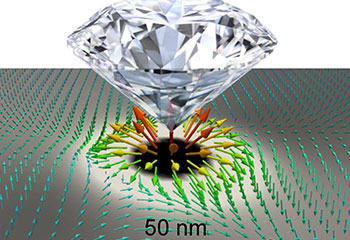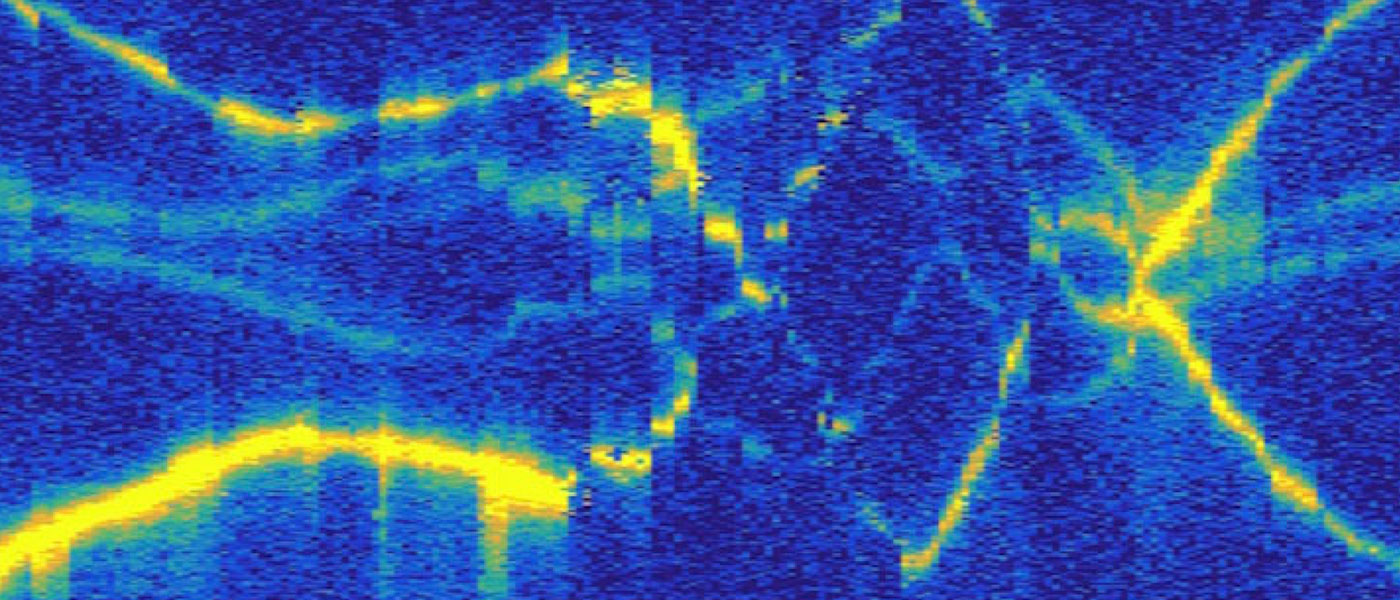Case Western Reserve researchers investigate magnetic materials in National Science Foundation-funded quantum research that could aid transformers, power converters
A Case Western Reserve University-led team is working on technology that could dramatically improve electrical transformers and power converters in electric vehicles.
To do that, researchers are focusing on what is known as “quantum sensing”—the atomic-scale technology made possible when scientists harness the smallest magnetic, electric or other changes and imperfections in materials to enable vastly more precise measurements.
Some quantum sensing applications are already in use and increasing fast—in everything from GPS mapping to diagnostic medical imaging to seismometers. It’s making the technology even more promising in the short term than the better-known quantum computer.

The Case Western Reserve-led team is focusing on changes in magnetic materials, first “developing a user-friendly platform to sense magnetic waves traveling through magnetic metal alloys,” said Jesse Berezovsky, an associate professor of physics leading the research at Case Western Reserve.
Berezovsky said the experiments could also lay the groundwork for discoveries in the emerging field of two-dimensional magnetic materials—an atom thick, in some cases.
Berezovsky is joined by CWRU researchers Matthew Willard, a professor of materials science and engineering, and Shulei Zhang, assistant professor of physics. They are working with collaborators at the University of Florida, including former CWRU researcher Philip Feng, professor of computer and electrical engineering and Xiao-Xiao Zhang, an assistant professor of physics.
Their work is being funded by a two-year, $1 million National Science Foundation (NSF) grant as part of its broader National Quantum Initiative and in partnership with UF researchers.
What is quantum physics?

nanoparticle. (CWRU/Jesse Berezovsky)
In the last few decades, researchers worldwide have been racing to master quantum mechanics to build a new order of high-speed computers. Cleveland Clinic and IBM earlier this year unveiled what is considered the first advanced computer system devoted mainly to healthcare research—work in which Case Western Reserve will play a role.
Berezovsky’s team and the NSF are pursuing research that challenges those building quantum computers.
“It’s hard to build a quantum computer because noise in the surrounding environment can very easily mess up the state of the qubits,” Berezovsky said, referring to the powerful, but less-than-stable, units of quantum information. “But turn that around and you can use those qubits to sense what is going on in the environment. That’s what we’re doing.”
Berezovsky and his team—using a qubit based on single atomic defects in a diamond crystal—are investigating the behavior of particles known as “magnons,” or the smallest part of a wave travelling through a magnetic material.
“Specifically, we’ll look at magnetic alloys that have a complicated nanometer-scale structure, which are already being developed for transformers and power converters for applications such as electric vehicles,” he said.
NSF focus on quantum sensors
The NSF recently awarded $29 million among 18 research teams to pursue new sensor technologies, including the CWRU-led team.
In addition to improvements to electric vehicles, Berezovsky and his team are pursuing, this new breed of sensors may one day allow doctors to pinpoint infections in individual cells or geologists to find subterranean mineral deposits without lifting a shovel, the NSF said.
For more information, contact the Office of Media Relations at case-news@case.edu.

